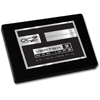- Qualcomm Launches Snapdragon 4 Gen 2 Mobile Platform
- AMD Launches Ryzen PRO 7000 Series Mobile & Desktop Platform
- Intel Launches Sleek Single-Slot Arc Pro A60 Workstation Graphics Card
- NVIDIA Announces Latest Ada Lovelace Additions: GeForce RTX 4060 Ti & RTX 4060
- Maxon Redshift With AMD Radeon GPU Rendering Support Now Available
OCZ Vertex 3 Max IOPS 240GB SATA 6Gbit/s SSD Review

When we took OCZ’s Vertex 3 SSD for a spin last month, there was no other way to sum up our thoughts than ‘blown-away’. How could such a drive get even better? With tweaked firmware and a doubling-up of NAND chips, of course. Let’s take a look at the Vertex 3 Max IOPS edition and see if its price premium is justified.
Page 8 – Real-World: Boot Times, Game Level Loading
For the boot test we perform a cold boot, with the stopwatch starting the moment the power button is pressed until the last systray icon has finished loading. A large number of factors can change how fast a computer starts, from the motherboard to the BIOS/EFI configuration, so these times should not be used as an expectation of how fast the SSD will boot in your respective system. Thanks to motherboards replacing the BIOS with UEFI boot times have dropped significantly in many cases.

It appears we are well into seeing diminishing results from upgrading our storage as far as boot times are concerned, which means something else is the bottleneck. Users that overclock the Core i7 processors by a significant amount can drop boot times even further, although booting Linux would deliver the same results.
OCZ’s Vertex 3 Max IOPS only manages to edge out the V3 here, but both deliver the best boot times we’ve seen so far. Where they truly shine are warm boots, or restarts where the system was already powered on. Warm boots with the V3 Max IOPs averaged around a mere twenty seconds.
Game Level Loading
Last but certainly not least of our benchmarks are the game level-load times. SSDs are great at decreasing load intervals, and having an SSD can appreciably improve game immersion by minimizing load delays. It may not seem like much, but after a few levels, having the load times decrease by even a third compared to a hard drive adds up fast.
For our new regimen we chose Portal 2 and Civilization V. Portal 2 is already a very well optimized game and isn’t particularly demanding, and Civilization V is anything but either of those. For Portal 2 we chose to load the larger sp_a3_03 chapter, while with Civ V we loaded a save game file from late in a large game.

The Max IOPS again just edges out the V3 in Portal 2, and ties it in Civ 5 where the lack of multithreading is the primary bottleneck. The important part to take away from this is if you are considering upgrading from a hard drive you will see some very real gains in performance, but the same can’t be said for most SSDs. The Vertex Turbo provides an interesting look back in time, but even it is much faster than the hard drive here.
The Vertex 3 Max IOPS is 39% faster than the mechanical drive when loading a chapter of Portal 2. Considering how many levels there are in any game, that 39% starts to make a tremendous difference and goes a long ways toward keeping the game experience smooth and immersive. I can personally attest that after getting used to an SSD for gaming, having to switch back to a mechanical drive for any reason is simply painful.
Support our efforts! With ad revenue at an all-time low for written websites, we're relying more than ever on reader support to help us continue putting so much effort into this type of content. You can support us by becoming a Patron, or by using our Amazon shopping affiliate links listed through our articles. Thanks for your support!




